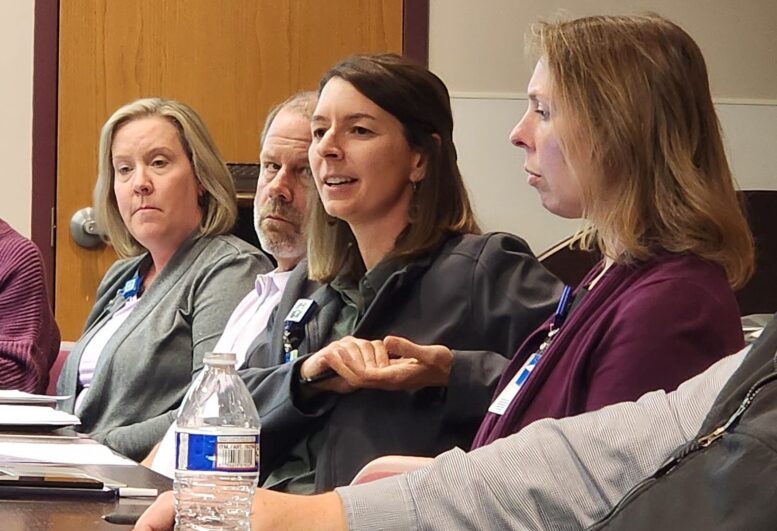By JAN McLAUGHLIN
BG Independent News
Highly contagious whooping cough is on the upswing across the U.S. – including here in Wood County.
Since the start of 2024, Wood County Health Department has received reports of eight confirmed cases, according to Rachel Aeschliman, director of nursing at the health department. That’s the highest number reported in any year during the past decade.
Whooping cough, also known as pertussis, is a respiratory disease caused by the bacterium Bordetella pertussis. It’s known for the “whoop” noise when someone gasps for air after a coughing fit that affects about a third of those who get this infection.
Pertussis is required to be reported to public health agencies by hospitals or physicians, and is treated with antibiotics.
People with whooping cough spread the disease by coughing or sneezing while in close contact with others, who then breathe in the bacteria.
The disease can be difficult to diagnose because the symptoms at the beginning are often like the common cold. Whooping cough is often not suspected or diagnosed until the cough becomes severe or long-lasting.
“That can make it easier to spread,” Aeschliman said.
Babies and young children may not cough but may have difficulty breathing instead. Of those infants becoming infected, one in three will need to be hospitalized, she said.
In severe cases, the coughing fits are frequent and intense.
“It can be called the ‘100-day cough,’” Aeschliman said. “It lives up to its name of whooping cough.”
According to CDC preliminary data, as of June 1, 2024, reported cases were more than twice as high this year compared to the same period last year. As of early September, there were more than three times as many reported cases of pertussis compared to this time in 2023, according to updated preliminary data from the CDC.
Aeschliman stressed the importance of staying current with vaccinations, since the efficacy of the vaccines wanes over time. With the pertussis cases in Wood County, those people with up-to-date vaccines have had less severe symptoms.
The median age of those contracting the disease has been 8 years old. Immunizations can provide a “protective bubble” around children. “We’re really protecting the youngest” by being vaccinated, Aeschliman said.
Aeschliman said she has been in contact with local school nurses and physicians who specialize in pediatrics.
“Our schools are doing a really good job” of staying on top of cases, she said.
How to prevent pertussis:
Tdap and DTaP are two combination vaccines that contain more than one vaccine in the same shot. Tdap and DTaP both protect against three diseases:
- Tetanus. Tetanus causes painful tightening of muscles. This occurs throughout the body and also affects muscles that control breathing.
- Diphtheria. Diphtheria can lead to breathing problems, heart failure, and death.
- Pertussis (whooping cough). Whooping cough causes serious coughing episodes that can lead to breathing difficulties, and it can be especially severe in babies and young children.
Babies and children under age 7 always get DTaP. Children over age 7 and adults always get the Tdap vaccine.
Suggested timing of shots:
- Children receive a five-dose DTap series at 2, 4, 6, 15-18 months and 4-6 years.
- Adolescents should get a dose of Tdap at age 11 or 12
- Pregnant women should get a single dose of the Tdap vaccine during every pregnancy, ideally during weeks 27-36. Tdap vaccination during the third trimester of pregnancy helps protect infants who may be exposed to pertussis, so it’s important to get vaccinated during every pregnancy.
- Adults get a TDap vaccine, which includes the pertussis vaccine, every 10 years.





